Thomas Schütte
Published: February, 2010, ZOO MAGAZINE #27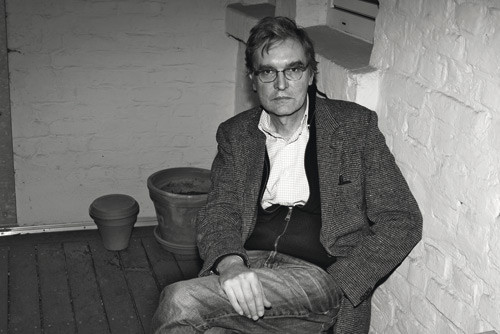
German artist Thomas Schütte has long been one of the most interesting and unpredictable European artists. During the last 30 years, he has built up an impressive oeuvre of visually and intellectually provoking works. This interview is a combination of two conversations which we had, the first one in 2010 and the second one only recently in 2013
Marta Gnyp: I read somewhere that when you visited Documenta V in 1972, where you saw the works of Sol Lewitt, Blinky Palermo, Daniel Buren you decided to become an artist.
Thomas Schütte: I also saw photorealism, which is completely forgotten now and which was at that time the main public attraction, art brute, landscapes, objects and so on. I was old enough to understand that even at that time, everything was possible. Every thinkable position was simply in this show – actually I went two times in the summer of 1972.
MG: You were interested in art before you went to Documenta?
TS: Yes, but I have never seen any exhibition. I knew paintings and sculpture only from books. In Kassel, I saw for the first time all the variety of possibilities in the art world.
MG: I assume that you used to make art yourself at that time, that you knew that you had a talent?
TS: Talent? I don’t know, but I was interested.
I had a film camera and I made an 8mm film, which by the way I still have. I went to the city library once per week and read everything they had about art.
MG: During the Documenta you discovered that art offers so many possibilities that you decided to be a part of it?
TS: Yes. The other reason was more practical. At that time, there was a boom of students at universities. For all faculties except art and religion, you needed an entrance exam, which I didn’t want to do. So I decided on art. Firstly I applied to the two famous film schools in Berlin and Munich where the important German filmmakers like Wenders and Herzog were working. I discovered that, unfortunately, I would need three years pre-education to enter the film academy, which I was not prepared to do, and they told me, that film is an industry, not for outsiders, who want to do things by themselves.
MG: So fine art was the only option you had?
TS: Actually I had no option; options came later. The word “option” always surprises me. It is a part of the computer language, which hasn’t existed before. 15 years ago, I was discussing with students about art and I remember them talking about options: there is no will, there is no need, but there is an option. Nobody had the energy to do something against all odds. This attitude was so shocking to me that I tried to find out where this “optional” thinking came from and I discovered that the computer is the source of it, since you can work there on many things at the same time.
MG: Could you see an option as a possibility of a conscious choice?
TS: Of course. Our generation was probably the last one without the options; we knew only good and bad, up and down, right and left. 200 kilometers from the place you lived, the world stopped at the Iron Curtain, right next to Kassel actually. There was no option, there was a finish. At the end of the 80s, the unification process and the introduction of computers changed the whole world.
MG: The 70s were for you the formative years. Was it easier?
TS: I think so. If you speak to young students today, they seem pretty confused, but on the other hand my own kids seem to be very structured.
MG: Are you teaching?
TS: No, I don’t want to be responsible for young people. I change my mind too often.
MG: Do you consider working with your hands and materials more honest than the omnipresent quasi-conceptual approach?
TS: I have to know my limits. Some time ago we started a four-meter high figure. I cut the head out of styrofoam, which was one meter high. Someone who helped me went away and I was all alone with the head. It was very hot. After one hour working, my body said, ‘it is enough. I had to sit down and smoke a cigarette. ‘ You have straight limits – either of the material and tools or of your own body, your ideas and concepts. When working with physical materials you always have an enemy.
MG: Are you fighting with the object you are making?
TS: Sometimes I am. The basic idea is, however, that you don’t see the fight at the end. It has to look easy and natural.
MG: Do you have assistants?
TS: I have my own assistants only for the computer work. Everything I’m not interested in I try to keep outside. In the workshop they prepare a sketch or a dummy and then I’m doing the rest. But basically, you need help, especially if a piece is larger than yourself. My workshop is extremely efficient. I do ask a lot of people when the work is half finished what do they think, and I like to work with good craftsmen and try to follow their ideas.
MG: Who are these people? Your gallerists? Your friends?
TS: Critics or people who are doing art, but mainly the fabricators. It is not that I’m completely alone in my studio at 2 in the morning breaking my head about a work. No, I close my shop at 6 or 5 p.m. I stop during the rest of the day; I try to relax because the ideas don’t come when you are stressed.
MG: Since the 80s you have been sporadically involved in the architectural projects. Why did you get interested in the architecture?
TS: There have been 10 or 11 projects so far; I do it like every two years. It is fascinating because the concept is completely different. I like to have a work that is situated in reality, since museums are fictions for a short moment. You cannot take this permanent work to Christie’s either. Besides, if it is for a permanent use it requires a different way of thinking. The buildings address a difference audience in comparison to the thousands of the museum visitors who come and go. It is also different because of its functionality aspect: it has to bear harsh weather conditions, the door has to close, and the window must go open. It has to function but at the same time all these buildings are very surprising.
MG: You are also responsible for the production of the work?
TS:Sometime I build like 3 or 4 models, to find the proportions and so on. I follow production closely, I interfere when it goes wrong, but I’m not the architect, neither I’m responsible for the costs and details of the construction. The architect has all the troubles, and I have all the fun, but sometime I have to compromise, too.
MG: Is it difficult to convince you to make a proposal for a house?
TS: I charge a cup of coffee, a good steak and the taxi to the airport.
MG: So you design it only for people whom you know well?
TS: Good acquaintances. It makes me fun. I make mostly pavilions or teahouses. The translation of the word „pavilion“ means a house of pleasure, a house for fun.
MG: Do you try to escape the pressure coming from art institutions and your galleries?
TS: Nowadays, galleries are working with deadlines. In the 80s, there were workshops in the galleries; you could come whenever you wished, they had equipment and a working space. The moment the computers moved in, suddenly galleries got glass tables, computers, the personnel that consists of mostly perfectly dressed women who don’t even say hello. You cannot make noise or dirt. Today’s galleries look like a shoe shop – not like a workshop. There is only one gallery I have seen during the last 10 years where things were different: when the owner began to paint a wall himself because I found it not gray enough. I was painting my artwork, while he was painting the wall. It was a small gallery in Burgundy called Pietro Sparta, which is in the middle of nowhere, but people know it because the region is famous for its great food and fantastic wine. The Italian owner has been working with artists like Luciano Fabro, Mario Merz, Jannis Kounnelis for 20 years without any art education. For me he even built a 20- meter long house, as a full scale model, just for fun.
MG: Is this an ideal gallery for you?
TS: When I started to work with some gallerists like Philip Nelson, Ruediger Schoettle or Konrad Fischer, we were like a family. They had time for you. It was completely normal to spend evenings with Mario Merz or Gerhard Richter. No money, no pressure, no sales, perhaps one or two works during one show. The gallery consisted of the owner, one secretary and one craftsman, while today’s gallery relies on one boss who is sitting in a plane with two telephones and 20 employees. In the 80s, art became business. The business people came into the art world. You never see them for they buy and sell on the telephone. Since the 90s, art became an industry – they started to produce art works like cars. They can destroy artists by bad press and the merciless pressure to sell. The industry even can produce their own artists. Konrad Fischer used to complain, when the show was sold out: what have we done wrong?
MG: Are you are suggesting that in the current art world everything could be constructed?
TS: Yes, this is the reason that sometimes I’m losing my interest in being on art fairs or even big group shows.
MG: Don’t you think that there is still great art being produced?
TS: Once in a year I see a show by a living artist that really touches me. Other works are good but not touching. It is different regarding dead artists. The older you get the more you are interested in old and classical positions.
MG: Your show in the Serpentine Gallery in London referring to the classical subject of the portrait was a great success. Even the English press was very positive.
TS: The London press was pretty enthusiast, which is indeed unusual.
MG: What was the reason that the public was so excited?
TS: I found out after the show has opened that without knowing it we pushed up three right buttons. The first one is the figurative monument. England is one of the few civilized countries in the world – except dictator countries -, which has still a tradition of installing monuments of politicians like Ronald Reagan or other famous people or war heroes, throughout the city. They have a system of commissions of monuments. I also found out that they have a tradition of portraits. They have the National Portrait Gallery with photos of Mick Jagger, sculptures of the Queen, or paintings by Lucien Freud, whereby upstairs in the building there are historical portraits of the last four hundreds years. They have a national prize, the British Petroleum Prize on portraits that generates a lot of attention, there you can see how not to do things. And as the third thing, they have the tradition of watercolors. They have the National Watercolor Society and the Prince is doing watercolors, like many other people.
I touched all the three soft spots of this country without knowing it. I just did it by instinct. That’s why it was so positive reaction.
MG: You showed plenty of works from different periods, mostly from your own storage. How come that your work doesn’t lose on actuality or at least that people see it as actual?
TS: This was the job of the curator Hans Ulrich Obricht who came with the idea of portraits. This was not my idea but I quickly said yes, made a list of works and we could install it in two and half days. Luckily I left the space open, followed the line of the building and I didn’t exhibit too many works. The interest of the public was huge; every day 1500 visitors came to visit the show. I’m happy to see that it is possible to work in England and to have success without the usual scandals.
MG: Are you not amazed yourself that everything you make turns out to be a success in the reception of the public.
TS: I don’t believe it. I don’t read the articles. I look at the headlines, I look at the photos and I read the first and the last sentence, the text between them I don’t. If you start to believe in it you are lost.
MG: Still, why is it now the time for Thomas Schütte? Why does the public want to see you as a great artist?
TS: I don’t know. Possibly because I make less stupid mistakes than the others. I am out of this art fashion industry. I am always trying to do something new, there is no repetition of one product, and I’m not a brand. I want to be an artist and not to be a brand. The brand artists are on the other end of the rainbow.
MG: Are your artworks also surprising for you?
TS: This is exactly why I’m doing it, to entertain myself.
MG: Do you see any coherence in art that has been produced in the last 20 to 30 years?
TS: This is a job of the critic to see and explain these processes but during the last 20 years, the critic missed the train. The art industry uses the word of the critic to sell but they never pay them. There is no money for the critics, there is no audience for them, they have no big platform. There was a certain time that the artists wanted to please the critics or the museum directors. This is one of the reasons that you could find the secondhand conceptual art everywhere. I have no idea what survives and what not. It feels very much pornographic – use and abuse.
MG: What became clear to me looking at your works and reading your statements is that freedom and equilibrium are the main concepts of your work: to have as many possibilities as possible and to reach a kind of balance. You don’t like to repeat an idea; you are using elements from architecture and theater, you are using different media. Are you permanently searching for something new or you don’t want to commit yourself to one territory?
TS: It is not always searching for new. There was a moment that I took old objects and transformed them. There was a strange feeling that the vision was suddenly out. For many years, I had a coffee with a cigarette and I immediately had an idea. I wrote it down and I made it. But suddenly everything became a black hole.
MG: When did it happen?
TS: Some years ago. I still have sometimes the problem to get myself motivated so I can start with existing things and work from there.
MG: Why did you lose it?
TS: A breakdown. I made sometimes 15 gallery shows per year. The result was that I had three times a complete burn out, the last 30 years, so serious that I had to go to hospital. So I protect myself now and concentrate on nice things.
MG: I would like to speak with you about a very special work – Grab (1981) – in which you depicted your own grave with the date of your death. Why did you make it?
TS: This is a model for a gravestone. I think everybody in the age between 20 and 30 gets the idea about mortality. I got it out of the blue walking through a graveyard. I went home, I made a drawing, cut out the shape of a family house, I put my name, the date of birth and I couldn’t leave the end empty, so I decided to put the date over 15 years: 25.03.1996. I gave myself 15 years because I thought by then I will be dead anyway. Firstly, because I was smoking, heavily drinking and working much too hard. Many people die at the age of 42, naturally or by suicide. It is a very critical year for a man. Secondly, in the 80s there was no idea to survive the millennium change; anyway the end of the century was the end of the world, very apocalyptic.
MG: Were you not afraid that you were provoking the fate?
TS: When this date came it felt strange. I was surprised how strong this piece is. I keep it for myself like many other old pieces. It is interesting to project the end of all, but nowadays I forget this day.
MG: Also scary?
TS: No, what is scary about the death? At a certain age it can come every day. Death is the idea that keeps you away from all the nonsense. What is really interesting is the shock of mortality when it comes.
MG: Do you experience the shock of mortality sometimes?
TS: Every morning, to get myself motivated, to get dressed and step out of the home.
MG: You chose Seneca’s writings as a part of your catalogue several years ago. According to Seneca, the happy man enjoys personal freedom and autonomy and he can be defined as one who thought the gift of reason has neither desires nor fears. Is this your ideal of a happy life?
TS: If you are lucky.
MG: Would you like to live a life without desires?
TS: I’m not a priest. By the way, they have hard time at this moment. We faced the crisis of communism, capitalism, then banking system, the state system and now the religious system. Only the art system survived and is still getting stronger. It is so strange: the museums are full whatever you show. Works are being sold no matter how deep the crisis seems to be. The art didn’t collapse.
MG: What do you think is the reason?
TS: I don’t know. Maybe because the art has incorporated a self-critical aspect, which other institutions are missing, they forgot how to rethink the subjects. The contemporary or modern art system that has existed since 150 years has a critical system, like a permanent revolution. We learned, even successfully artists don’t believe in what is said, they try to continue.
MG: The demand for your shows must be big.
TS: The best way for not doing shows with the galleries is to ask them to give me an idea. There is no idea, this people have no idea, and they want products. They have a huge system and huge spaces, especially in London. They have only one idea, get the works in and get them out, and to collect huge prizes. So the polite way to say ‚no’ is, if you have an idea I will do it.
MG: Do the collectors also approach you directly?
TS: Yes, now the collectors hire museum people, build big buildings for their collections and sometimes come to me. I’m not pushing it but if it is interesting to me I do cooperate.
MG: Do you sell your old works?
TS: I basically don’t sell what is in my storage; it is for my 3 kids and myself.
MG: What do you think about the huge sums of money being paid for your works?
TS: 20 years ago I made this model puppets for United Enemies, each evening. Nobody wanted it in the beginning; they were too small, like 40 cm. We showed them, but I had to stop in a certain moment because we couldn’t get the glass tops anymore. The production was stopped in Czechoslovakia. Now the puppets are at auction for 1 million $. To double the price is ok, 10 times the prices is ok, the poor collectors have to earn as well, but to increase the price 100 times? I better keep it for myself. The collectors now are all dealers, somehow. They are buying and selling, only the buying is public and the selling is not publically announced.
So I try not to do more than one gallery show per year.
MG: How does it feel? It must be also very exciting to know that your works achieve such horrendous prices?
TS: When I feel very bad I go to my storage and see 30 steel women on top of each other, in the shelves. It is my life insurance. Even in a bad year I can make good shows. A museum cannot effort to lend 50 sculptures, 50 drawings or 50 photos etc. Every collector asks a fee, the costs of transportations are so huge that only big museums can do complete shows and only the rich artists because you have to bring a lot of money by yourself.
MG: Did you co-finance the Reina Sofia show in 2009-2010 for example?
TS: No, for this exhibition I was completely out. I found it too big for me, especially because the social crisis was already visible 3 years ago. I felt guilty. I was not involved in the installation of the exhibition; my assistant was there. I was completely out of this project.
But for each show, for each book as an artist you have to bring an edition. Sometimes it is easy, sometimes not, but this is the way to collect the money for the many books.
MG: Do you consider this money-related development of the art world as positive?
TS: It is a big mistake. 1 % of the artists are visible and 99% are considered as losers.
MG: Do you follow what is happening in the art world?
TS: I don’t read art papers. I get a package every three months but I leave in the plastic. I have things to do. Silence is interesting.
MG: You are not afraid that you are doing something exactly the same as someone else?
TS: In my field there are not so many people. I don’t know anybody who put flowers on the table and draw it. Nobody is doing this. It is a very interesting game to make.
I really like to do the things nobody is into. Like flowers, faces, portraits, houses, neglected things, coming from the tradition.
MG: The tradition is for you a part in making art?
TS: You cannot make art, you only can make art happen. This is the only thing you can do, prepare yourself and things will happen. Art happens. For example drawings: you can bring yourself in the mood to make a drawing but you cannot force yourself to create.
MG: How do you prepare yourself for this?
TS: By sleeping, by doing nothing or listening to the music, waiting. Many days nothing happens and than all of the sudden it is there.
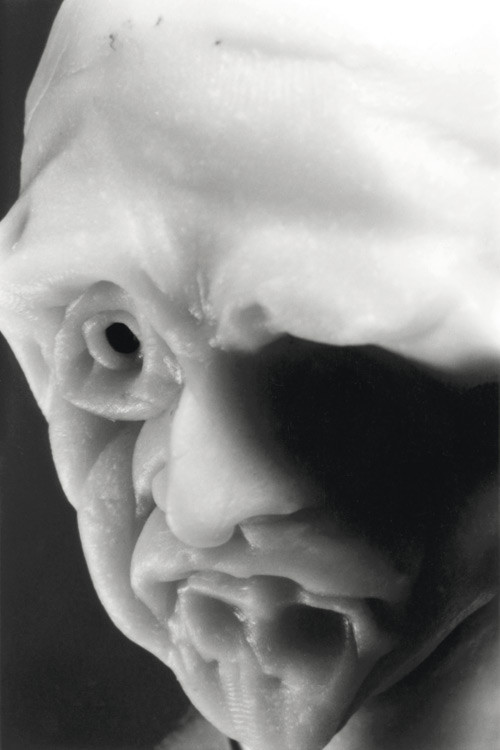
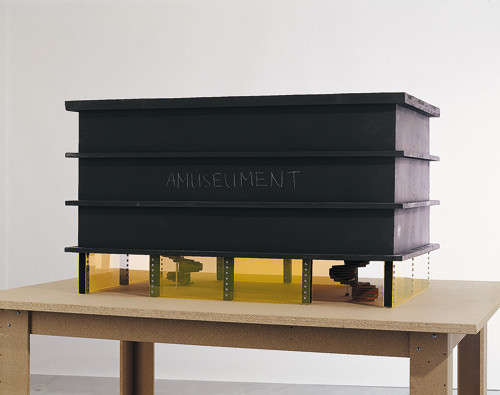
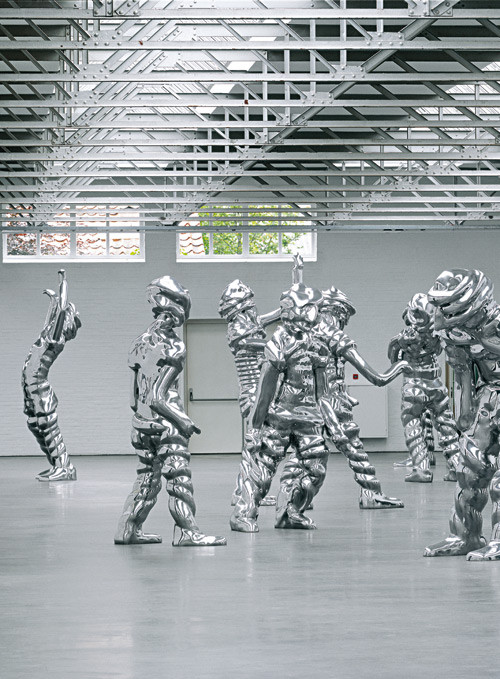
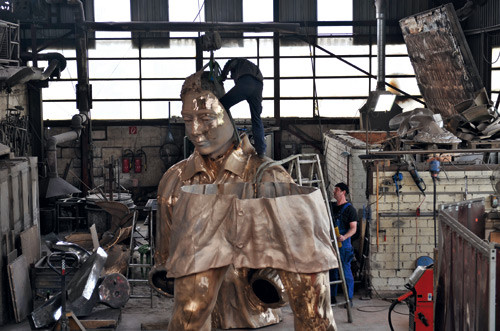
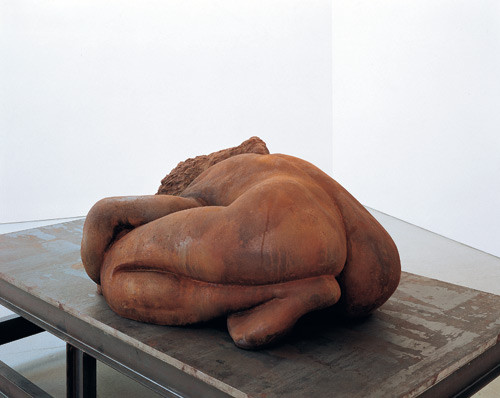
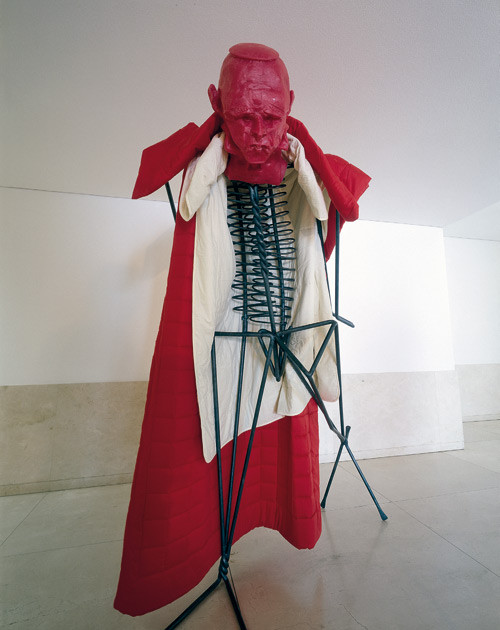
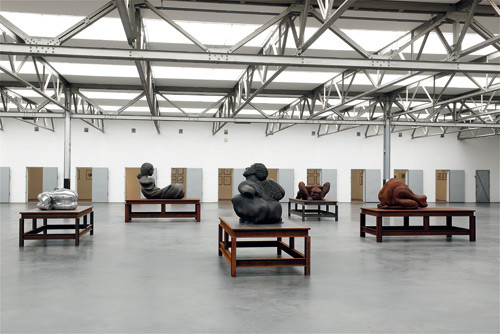
TILBURG, NETHERLANDS, 2006, PHOTO: PETER COX)